What trimming and profiling
router cutter sizes are available?
|
| |
|
|
|
|
| |
|
|
|
|
| |
 |
|
| |
|
|
|
|
| |
|
|
|
|
| |
Trimming and profiling router cutters are most often sized according to the following dimensions:
|
|
| |
Shank diameter of trimming and profiling router cutters
|
|
| |
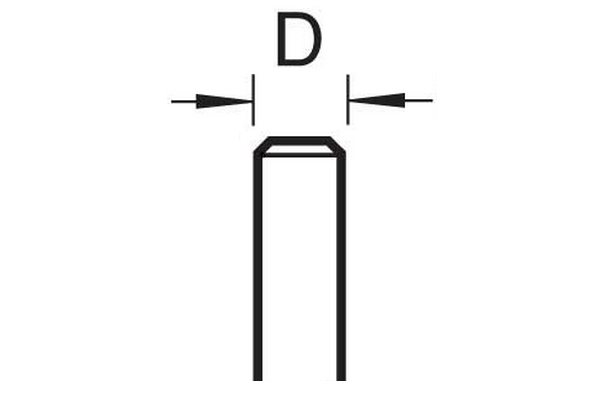 |
|
The shank diameter is measured across the centre of the shank from any point on its circumference.
Trimming and profiling cutters are available with ¼" (6.35mm), 8mm (5/16"), ⅜" (9.5mm), 12mm (½" approx.) and ½" (12.7mm) shank diameters.
|
|
| |
|
|
|
|
| |
Overall length of trimming and profiling router cutters
|
|
| |
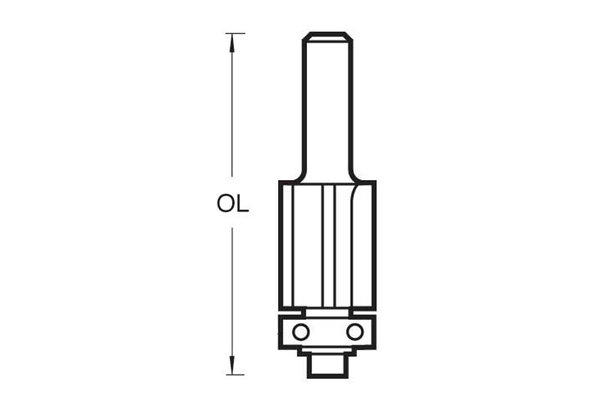 |
|
The overall length of a cutter is measured from the top of the shank to the bottom of the cutting edges or guide (if there is one).
Trimming and profiling cutters range in length from 32mm (17/64") to 116mm (4½").
|
|
| |
|
|
|
|
| |
Diameter of trimming and profiling router cutters
|
|
| |
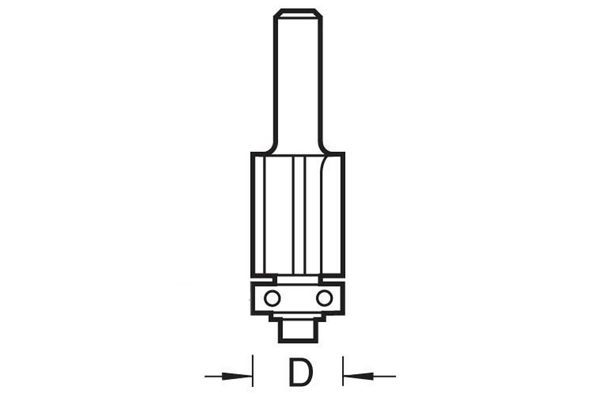 |
|
The diameter is the maximum width of the router cutter, and is measured from the outermost point of the cutting edges through the centre of the bit.
|
|
| |
|
|
|
|
| |
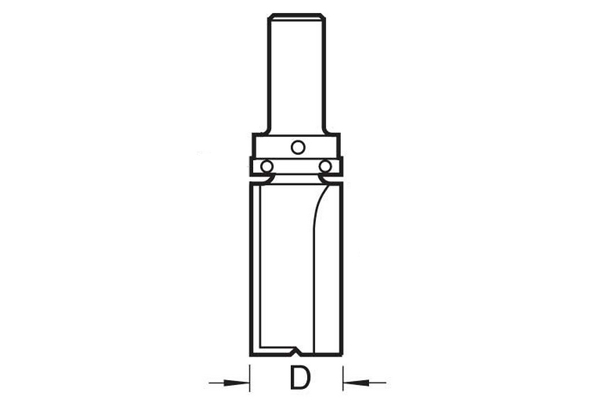 |
|
For cutters without a guide beneath their cutting edges, the diameter is also the maximum width of the path made by the cutter in one pass.
Profiling and trimming router cutters have diameters ranging from 6.3mm (¼") to 34.9mm (1⅜").
|
|
| |
|
|
|
|
| |
Cutting edge length of trimming and profiling router cutters
|
|
| |
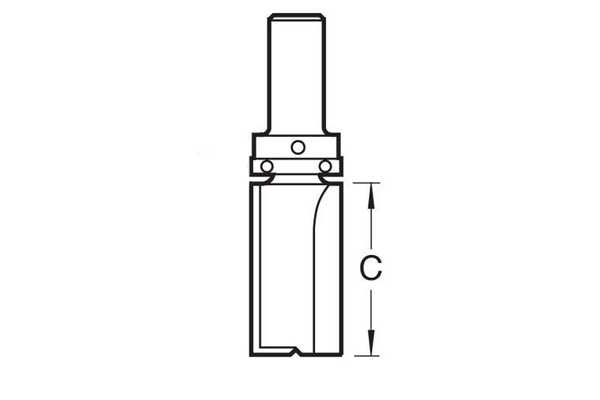 |
|
This is the maximum length of the full cutting edge of the router cutter, and is measured from the top of the cutting edge to the bottom.
Profiling and trimming cutting edge lengths range from 4mm (5/32") to 63mm (2½").
|
|
| |
|
|
 |
|
| |
|
|
 |
|
| |
Guide diameter of trimming and profiling router cutters
|
|
| |
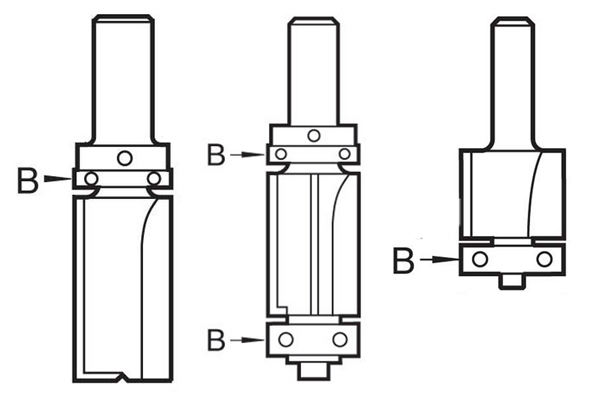 |
|
Most trimming and profiling router cutters are supplied with a ball-bearing guide located on their shank or beneath their cutting edges.
Bearings range from 6.35mm (¼") to 26mm (1 1/32") in diameter.
|
|
| |
|
|
|
|
| |
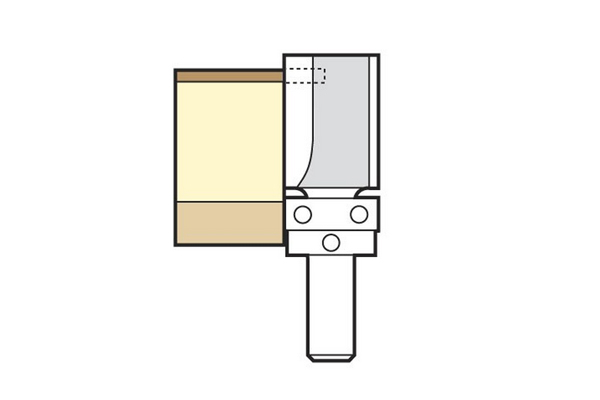 |
|
For most applications, trimming and profiling cutters are designed to be used with bearings that are minutely smaller in diameter than the cutters themselves.
However, larger or smaller bearings can be fitted to alter the cutting depth.
|
|
| |
|
|
|
|
| |
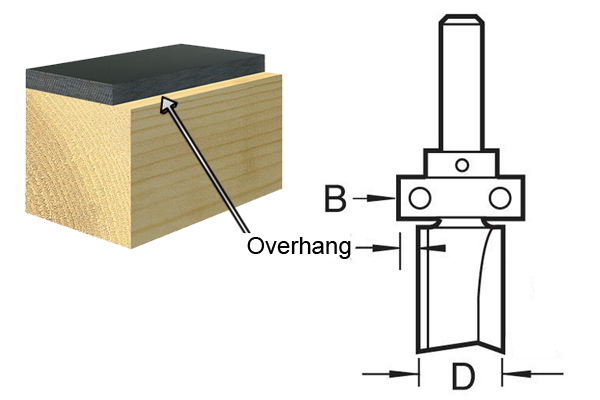 |
|
Larger bearings
Using a bearing guide that is wider than the cutting edges will mean that the cutter leaves an overhang.
The distance between the outside edge of the guide and tip of the cutting edges will determine the size of the overhang.
|
|
| |
|
|
|
|
| |
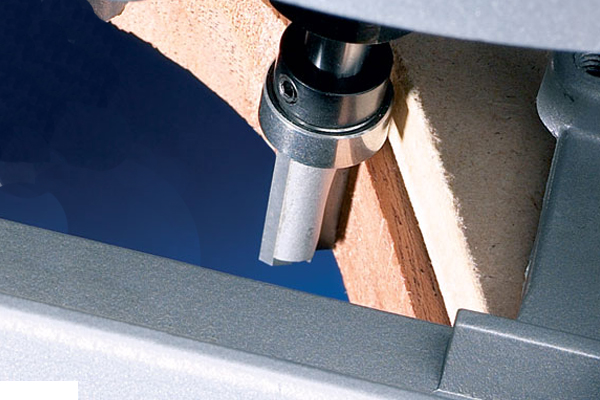 |
|
A larger bearing is often used so that the overhang can be removed in the final pass, placing less stress on the cutting edges.
|
|
| |
|
|
|
|
| |
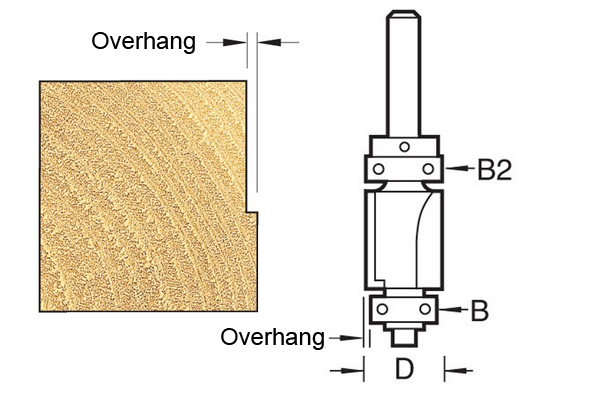 |
|
Smaller bearings
Using a bearing guide with a smaller diameter than the cutter will increase the cutting depth, meaning that the trimming and profiling cutter becomes a rebater. This is often necessary when removing damaged trim.
As with rebate cutters, the distance between the outside edge of the bearing guide and the tip of the cutting edge will determine how wide the rebate is.
|
|
| |
|
|
|
|
| |
 |
|
| |
|
|
|
|